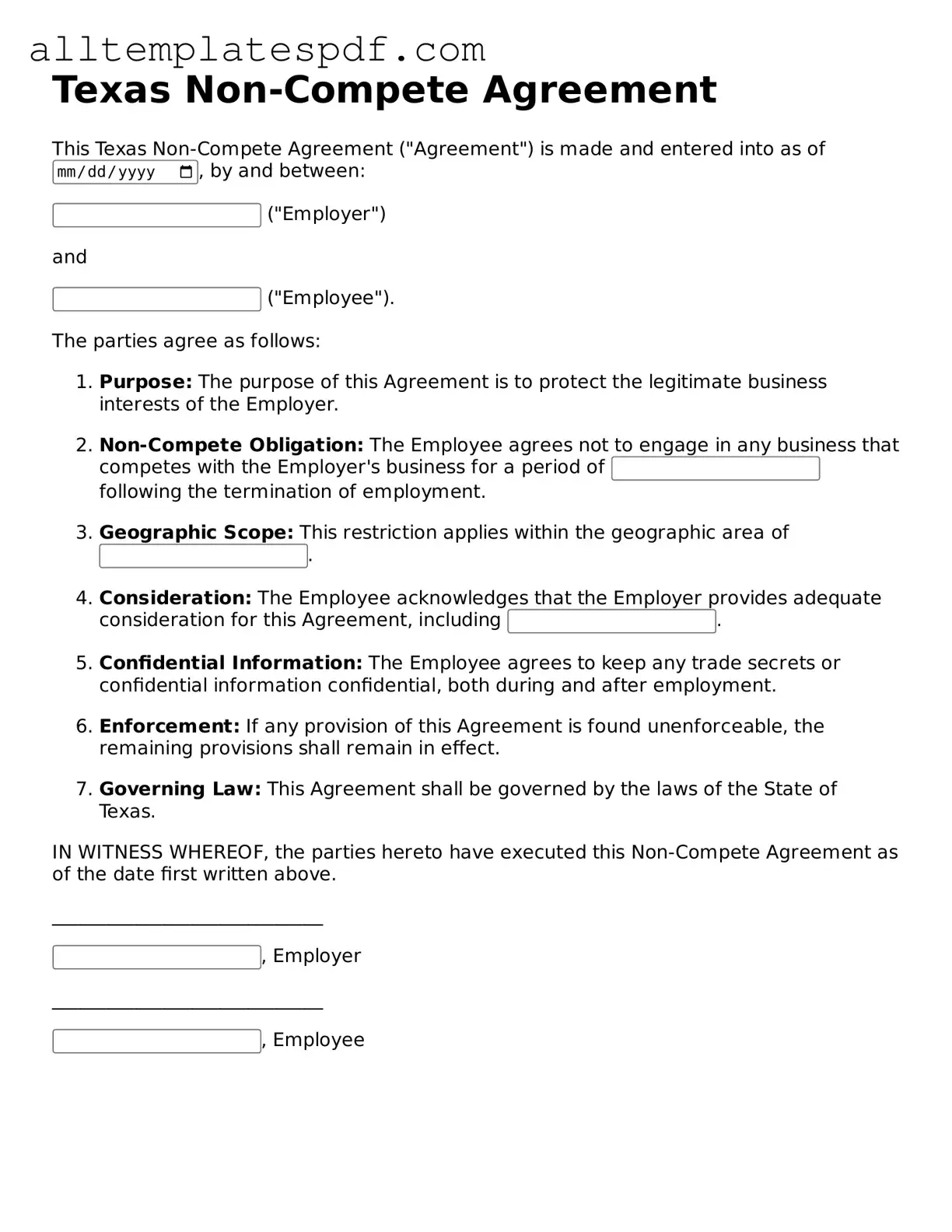Filling out a Texas Non-compete Agreement form can be a complex process. Many individuals make mistakes that can undermine the effectiveness of the agreement. One common error is failing to specify the geographic area covered by the non-compete. Without clear boundaries, the agreement may be deemed too broad and unenforceable. It's essential to define the scope of the restriction to ensure it is reasonable and justifiable.
Another mistake is neglecting to outline the duration of the non-compete. Texas law requires that the time frame be reasonable. If the duration is excessively long, a court may invalidate the agreement. Individuals should carefully consider how long they need to protect their business interests while also allowing former employees to seek new opportunities.
People often overlook the importance of including consideration in the agreement. In legal terms, consideration refers to what each party gains from the contract. In Texas, a non-compete must be tied to an employment relationship or some form of compensation. Failing to provide adequate consideration can render the agreement unenforceable.
Another frequent oversight is not consulting with a legal professional before finalizing the agreement. Many individuals believe they can handle the form on their own, only to discover later that they missed critical elements. Seeking legal advice can provide clarity and ensure compliance with Texas law, ultimately protecting both the employer and employee.
Additionally, some individuals do not review the agreement thoroughly before signing. Rushing through the process can lead to misunderstandings about the terms. It’s crucial for all parties involved to read the document carefully and ask questions if anything is unclear. This step can prevent disputes down the line.
Lastly, people sometimes fail to update the agreement as circumstances change. Business needs evolve, and what was once a reasonable restriction may no longer apply. Regularly reviewing and revising the non-compete agreement can help maintain its enforceability and relevance. Keeping the document current is essential for protecting business interests effectively.
